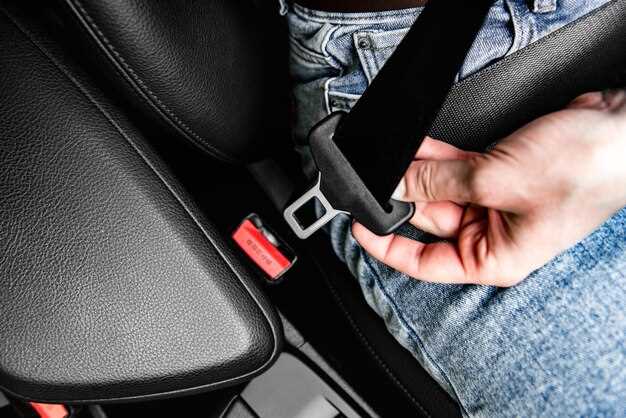
Installing a racing harness is a critical step in enhancing driver safety and improving performance on the track. The correct installation of a harness not only helps to keep the driver securely in place during intense racing maneuvers but also minimizes the risk of injury in the event of a collision. A properly fitted harness ensures that the forces experienced during a crash are distributed evenly across the body, reducing the likelihood of trauma.
In this guide, we will outline essential steps and best practices for the safe installation of racing harnesses. Choosing the right harness for your vehicle is crucial; it must be compatible with your specific needs and the design of your car. Understanding the different types of harnesses available–such as 4-point, 5-point, and 6-point systems–can help you make an informed decision that meets safety regulations and personal preferences.
Once you have selected the appropriate harness, the installation process becomes vital. Incorrect installation can lead to inefficiencies in the harness’s performance, potentially compromising safety. This guide will provide detailed instructions on how to securely mount the harness to your vehicle, ensuring that it performs optimally when you need it most. Following these guidelines will contribute to a safer racing experience, giving you peace of mind as you push your limits on the track.
Choosing the Right Location for Mounting Racing Harnesses
When it comes to the installation of racing harnesses, selecting the appropriate mounting location is crucial for both safety and performance. The harness must be secured to a structurally sound area of the vehicle, typically the chassis or a designated harness bar, to withstand the forces experienced during racing.
The mounting points should be located at the same level as the driver’s shoulders or just below, ensuring that the harness remains snug and effectively restrains the occupant during high-speed maneuvers. Avoid mounting the harnesses too low, as this can lead to submarining, where the driver slides under the harness in the event of a sudden stop.
Another important consideration is the angle of the harness straps. Ideally, they should be mounted at a 0 to 20-degree angle from the horizontal. This positioning helps to distribute forces evenly across the body and minimizes the risk of injury during an impact.
Additionally, you should ensure that the mounting hardware is of high quality and specifically designed for racing applications. Using proper bolts and locking mechanisms is essential to prevent any failure during use. Thoroughly inspect the chosen location for any obstructions that could interfere with the harness, such as roll bars, seat frames, or other components.
In summary, carefully evaluate potential mounting locations for your racing harnesses by considering both safety and effectiveness. Proper installation and positioning can significantly enhance driver safety during competitive racing events.
Step-by-Step Process for Installing Racing Harnesses

Installing racing harnesses requires careful attention to detail to ensure safety and effectiveness. Follow these steps to complete the installation process correctly.
Step 1: Gather Necessary Tools and Equipment
Before starting the installation, make sure you have all the required tools, such as a socket set, screws, a drill, and a harness installation kit. Additionally, check that the racing harness is compatible with your vehicle.
Step 2: Remove Existing Seatbelts
To install the racing harness effectively, first remove the existing seatbelts from your vehicle. Find the mounting points and use your socket set to remove the bolts securely. Keep the area clear for the new installation.
Step 3: Choose Mounting Location
Identify the appropriate mounting points for the racing harness. Typically, the harness should be anchored at points that are level with or slightly below the driver’s shoulders. Consult the manufacturer’s guidelines to ensure correct placement.
Step 4: Install the Harness Bar (If Necessary)
If your racing harness system requires a harness bar, install it at this stage. Follow the manufacturer’s instructions to ensure it is securely fastened to the vehicle’s frame. Make sure it is positioned correctly to allow for proper belt angle.
Step 5: Attach the Shoulder Straps
Start by attaching the shoulder straps to the designated mounting points. Ensure that the shoulder belts route over the shoulder and do not twist. Secure them with the appropriate hardware, tightening all bolts to the recommended torque specification.
Step 6: Secure the Lap Belts
Next, attach the lap belts to the mounting points located on the floor or sides of the seat. Make sure they fit snugly against your hips. Adjust the length so there is minimal slack, and secure them with the proper bolts.
Step 7: Install the Anti-Submarine Strap
For added safety, install the anti-submarine strap if your harness includes one. This strap prevents the body from sliding under during an impact. Mount it according to the manufacturer’s recommendations, ensuring a secure fit.
Step 8: Adjust the Harness for Fit
Once all components are attached, take time to adjust the harness for a comfortable and secure fit. Sit in the seat and ensure that the belts are tight but not restrictive. Proper adjustment is critical for both safety and performance.
Step 9: Perform a Final Inspection
After installation, conduct a thorough inspection of the harness and all mounting points. Verify that all bolts are tightened, and there are no signs of wear or damage. This step is crucial for ensuring safety during racing.
Step 10: Test the Harness
Finally, before taking your vehicle out on the track, conduct a test run. Make sure the harness functions properly and provides adequate support. Familiarize yourself with the belt system to ensure you are safe during rides.
Ensuring Proper Adjustment and Safety Checks After Installation

Once you have installed your racing harness, it’s crucial to perform a series of adjustments and safety checks to ensure optimal performance and protection during use. Proper adjustment of the harness enhances safety by keeping the driver securely in place during high-speed maneuvers.
First, adjust the straps of the racing harness to fit snugly around your body. The shoulder straps should lie flat against your shoulders without any twists, while the lap belts must be positioned low across your hips. Ensure that there is minimal slack in the straps; a snug fit prevents excessive movement during aggressive driving.
After adjusting the harness, conduct a physical check by simulating your driving position. Buckle up and assess whether you can comfortably reach the steering wheel and pedals. Make minor adjustments if necessary, ensuring that the harness does not impede your ability to operate the vehicle effectively.
Next, perform a thorough inspection of the harness connection points. Check that all mounting points are secure and that the bolts or fasteners are tightened according to the manufacturer’s specifications. Any loose connections could compromise the effectiveness of the harness in the event of an accident.
Regularly inspect the harness for signs of wear, fraying, or damage. Look for any discoloration or degradation in the fabric, as these could affect the integrity of the harness. If you notice any issues, replace the harness immediately to maintain safety standards.
Lastly, familiarize yourself with the quick-release mechanism of the racing harness. Ensure that it operates smoothly and can be easily accessed when needed. Practicing the release procedure before racing can save valuable seconds during an emergency situation.
In conclusion, proper adjustment and meticulous safety checks of your racing harness are essential steps to enhance safety on the track. Regular maintenance and attention to detail will ensure that your harness performs reliably when it matters most.



